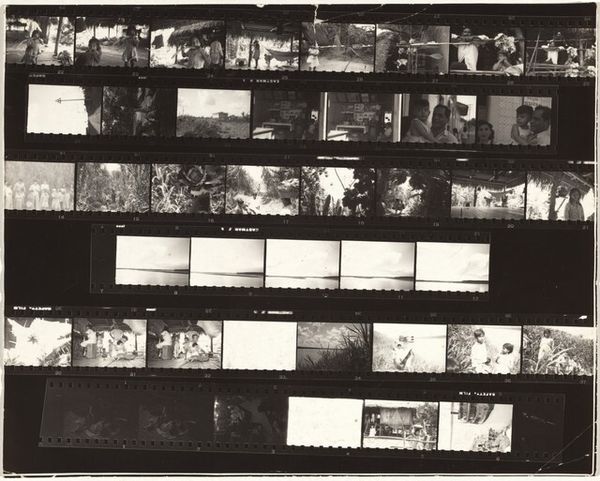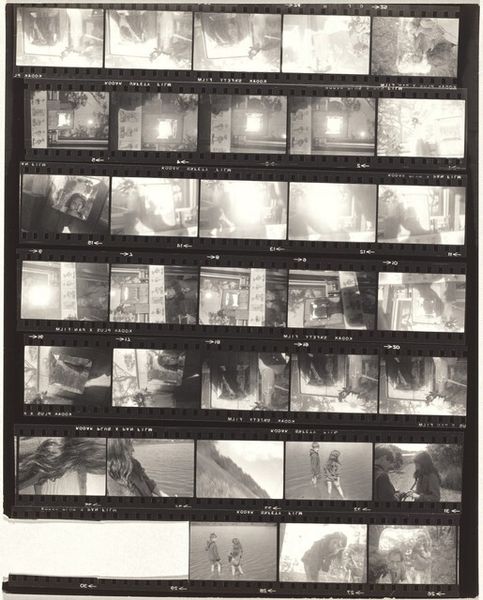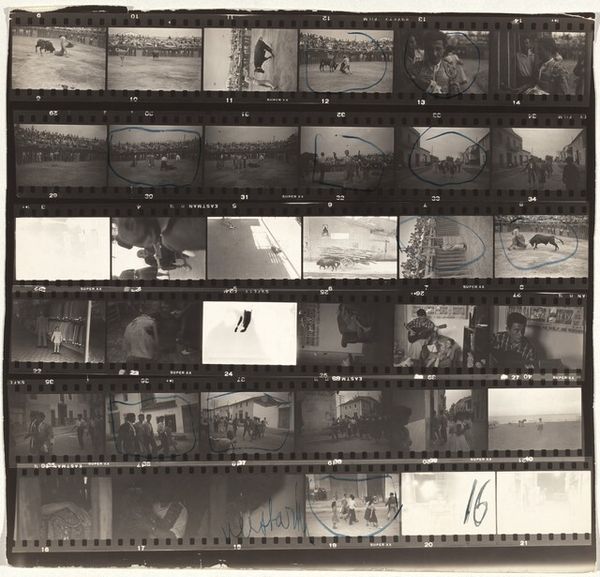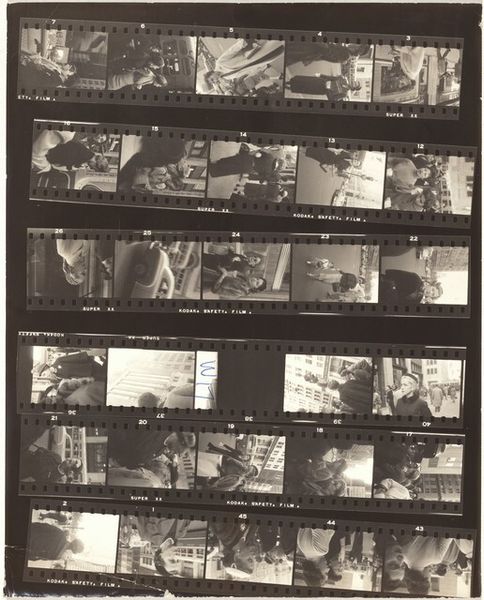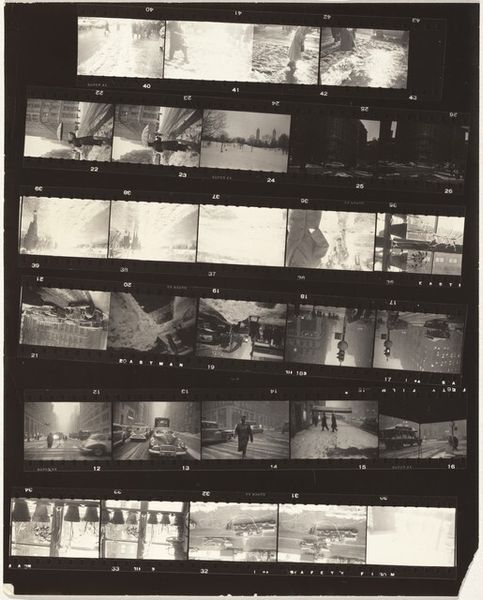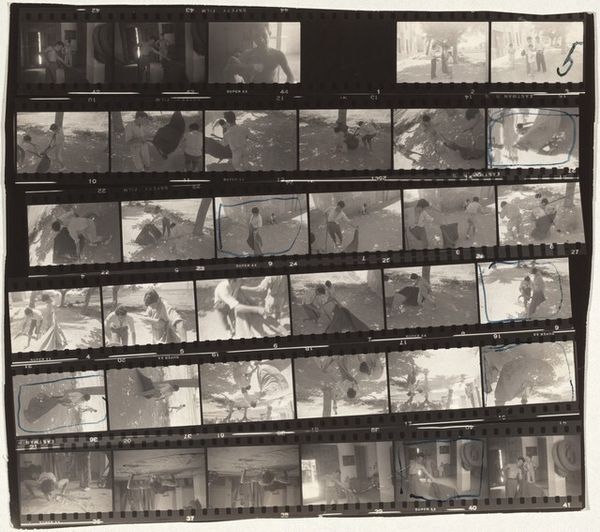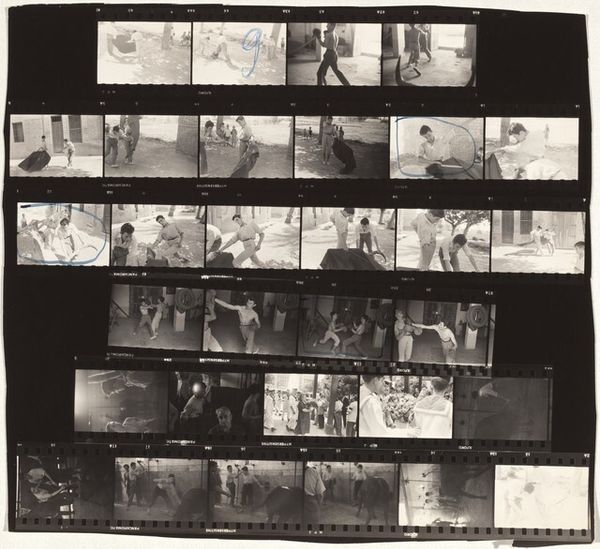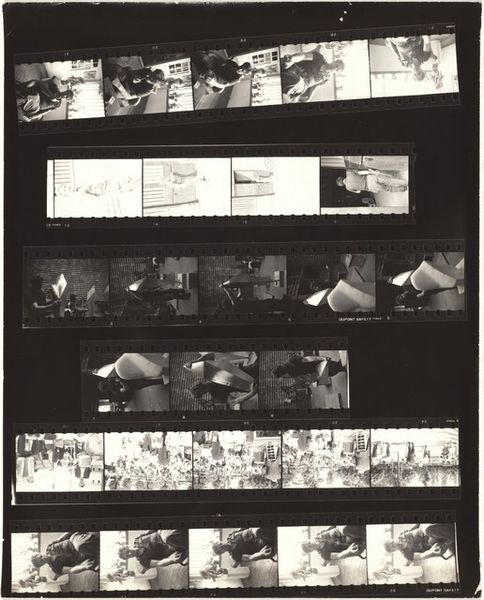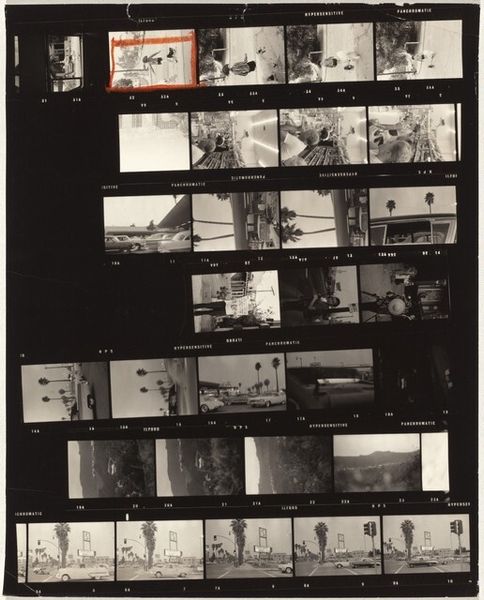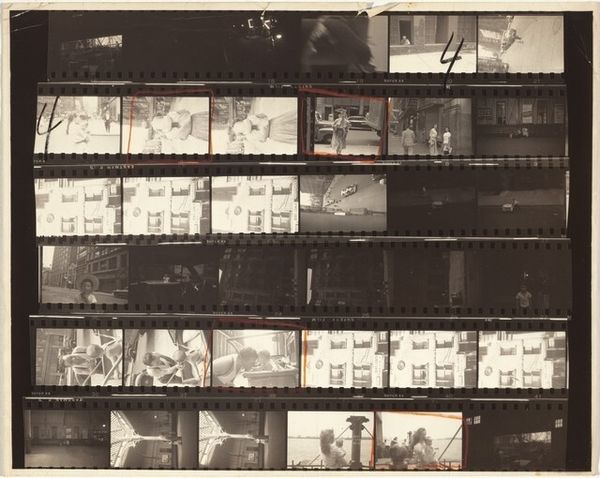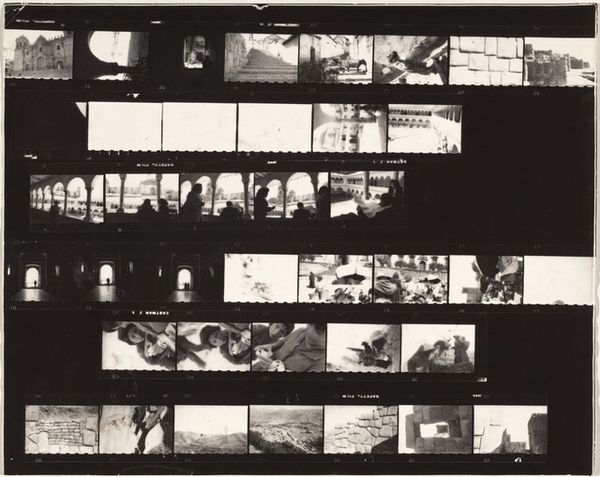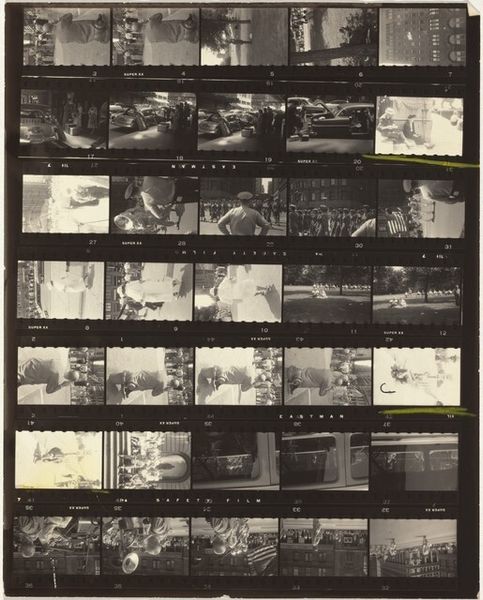
contact-print, photography
#
contact-print
#
street-photography
#
photography
#
ashcan-school
#
modernism
#
realism
Dimensions: sheet: 25.3 x 20.3 cm (9 15/16 x 8 in.)
Copyright: National Gallery of Art: CC0 1.0
Editor: This is a contact sheet titled "Family--New York City no number" by Robert Frank, from around 1948 or '49. It's fascinating to see the raw process, the many almost identical frames and compositions. What immediately jumps out to me is the tight grid format, the consistent borders around each image, and the film strip itself is almost as interesting as the photographs captured. How would you interpret this work from a formal perspective? Curator: The rigorous organization into a grid foregrounds structure. Consider the use of black and white. Stripped of color, what remains are the tones, stark contrasts, and varying light qualities. How does the repetition of the frames impact your reading? Editor: It feels like I’m getting a peek behind the curtain of his artistic choices. The subtle variations within the repeated frames suggest Frank's method of exploration, trying different angles and maybe light conditions for the shot. What does the concept of seriality communicate to you? Curator: Seriality here underscores the passage of time. We observe the slight shifts and variations, emphasizing photography’s innate ability to capture fleeting moments. The materiality itself–the grain of the film, the sprocket holes, the uneven development–conveys the conditions of its making, highlighting that it's an object. Have you considered how the physical object informs its meaning? Editor: Absolutely, the imperfections become integral. It shifts the focus from solely the subject matter – families and street scenes – to the act of photography itself. It also reflects modernism! It has that deconstructed perspective...What is your takeaway? Curator: Ultimately, I think, that Frank masterfully utilizes these formal elements – grid structure, monochrome, repetition, materiality – to emphasize the photographic process. A fascinating insight on Frank's working process...I'll think of this sheet as a whole different artwork from now on!
Comments
No comments
Be the first to comment and join the conversation on the ultimate creative platform.
